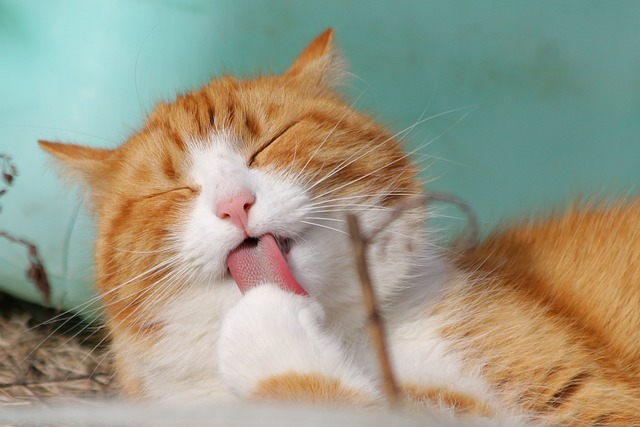Manx cats are a fascinating breed, known for their distinctive lack of tail and captivating personalities. If you’ve ever been curious about these unique felines, you’re in the right place. We’ll delve into the intriguing world of Manx cats in this comprehensive guide, exploring everything from their history and physical characteristics to their temperament and care requirements.
The History of Manx Cats
Origins
The Manx cat’s origins can be traced back to the Isle of Man, a small island located in the Irish Sea. Legend has it that the Manx cat’s tailless trait stems from a seafaring cat surviving a shipwreck and swimming ashore to the Isle of Man. Even if this tale is entirely accurate or simply folklore, one thing is certain: the Manx cat’s unique genetic mutation has captured the fascination of cat lovers for centuries. The Manx cat, with its distinctive lack of tail, has intrigued cat lovers for centuries. Originating from the Isle of Man in the Irish Sea, these felines carry a rich history and a mysterious allure.
- Origins: The Manx cat’s lineage can be traced back to the Isle of Man, where folklore suggests a seafaring cat survived a shipwreck and swam ashore, establishing the breed’s unique characteristics.
- Legend: Tales of the Manx cat’s tailless trait have woven into folklore, with stories of its origin ranging from seafaring adventures to mystical encounters, adding to the allure and intrigue surrounding the breed.
- Folklore: While the accuracy of these tales may vary, the undeniable charm of the Manx cat’s unique genetic mutation continues to capture the imagination of cat enthusiasts worldwide.
- Genetic Mutation: The Manx cat’s taillessness is attributed to a genetic mutation, which can manifest as either a complete absence of a tail or a short stump, contributing to the breed’s distinct appearance.
- Variety: Manx cats exhibit a range of tail lengths, from entirely tailless (“rumpies”) to those with short stumps (“stumpies”), showcasing the diversity within the breed.
- Distinctive Appearance: Beyond their taillessness, Manx cats may also display skeletal abnormalities, such as a shortened spine, further enhancing their unique and captivating appearance.
- Historical Significance: Throughout history, the Manx cat’s distinctive traits have been documented, reflecting its enduring popularity and significance among cat fanciers.
- Genetic Diversity: Researchers and breeders alike study the genetic mutation responsible for the Manx cat’s unique characteristics, aiming to understand and preserve the breed’s distinct traits.
- Island Influence: The isolated nature of the Isle of Man likely played a role in shaping the Manx cat breed, fostering its development and contributing to its resilience and adaptability.
- Global Spread: While originating from the Isle of Man, the Manx cat has since gained popularity worldwide, captivating cat enthusiasts with its charm and distinctive traits.
The Manx cat’s origins and genetic traits have woven a fascinating tapestry of history and folklore. From its humble beginnings on the Isle of Man to its global popularity today, the Manx cat continues to enchant and captivate cat lovers everywhere with its unique charm and enduring appeal.
Genetic Mutation
The most defining feature of the Manx cat is its lack of a tail, a trait caused by a genetic mutation. While some Manx cats are entirely tailless (known as “rumpies”), others may have a short stump of a tail (referred to as “stumpies”). This genetic mutation can also lead to other skeletal abnormalities, such as a shortened spine, which adds to the Manx cat’s distinctive appearance.
Physical Characteristics of Manx Cats
Body Type
Manx cats are medium-sized cats with sturdy, muscular bodies. Despite their lack of a tail, they are well-balanced and agile, with a characteristic rabbit-like gait that sets them apart from other breeds. Their hind legs are often longer than their front legs, giving them a unique silhouette.
Coat Varieties
Manx cats come in a variety of coat lengths and colors, including short-haired and long-haired varieties. Common coat colors include black, white, blue, cream, and tortoiseshell, among others. Their dense, double-layered coats require regular grooming to keep them looking their best.
Temperament and Personality Traits
Affectionate Nature
Despite their independent streak, Manx cats are known for their affectionate and loyal nature. They form strong bonds with their human companions and enjoy spending time with them, whether cuddled up on the couch or playing games together.
Intelligence
Manx cats are highly intelligent and curious creatures. They love to explore their surroundings and engage in interactive play. Providing them with puzzle toys and enrichment activities can help keep their minds stimulated and prevent boredom.
Adaptability
Manx cats are adaptable and can thrive in various living environments, from apartments to rural homes. They get along well with children and other pets, making them an excellent choice for families looking for a friendly and sociable feline companion.
Care Requirements for Manx Cats
Grooming Needs
Both short-haired and long-haired Manx cats require regular grooming to keep their coats healthy and free of tangles. Weekly brushing is recommended for short-haired Manx cats, while long-haired varieties may need brushing several times a week to prevent matting.
Health Considerations
Due to their unique genetic mutation, Manx cats may be prone to certain health issues, including spinal problems and digestive disorders. Regular veterinary check-ups are essential to monitor their overall health and address any potential issues promptly.
Exercise and Play
Manx cats are energetic and playful creatures that require regular exercise to stay happy and healthy. Interactive toys, climbing structures, and play sessions with their human companions can help fulfill their need for physical and mental stimulation.
Conclusion
Manx cats are a captivating breed with a rich history and distinctive physical characteristics. From their tailless trait to their affectionate personalities, there’s no denying the unique charm of these fascinating felines. Even if you’re a seasoned cat owner or considering adding a Manx cat to your family, understanding their unique traits and care requirements is essential to providing them with a happy and fulfilling life. So, why not welcome a Manx cat into your home and experience the joy of living with one of these remarkable creatures?

